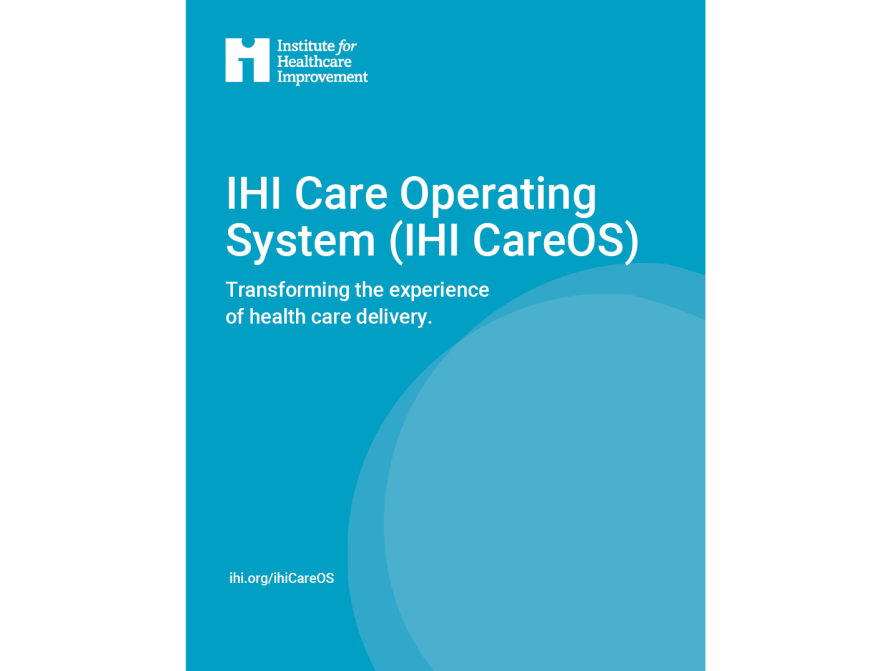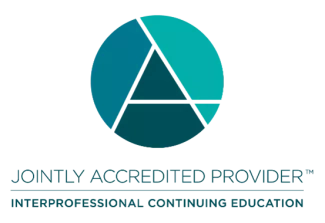IHI Open School for the Middle East
To purchase a subscription, contact us at OpenSchoolSubscribers@ihi.org. Please include the name of your organization, the size of your requested subscription, and mention that you are purchasing an IHI Open School for the Middle East subscription.
At this time, these courses are available through group subscriptions only.
This offering is brought to you through a partnership between IHI and the Hamad Medical Corporation.
To date, more than nine million IHI Open School courses have been completed worldwide.
What You'll Learn
Learners around the world use the Open School to:
Develop the capability of health care staff in the areas of safety, quality improvement, equity, and person-centered care
Develop a common language within their organizations about system improvement and quality improvement methods
Guide clinicians to deeply consider what matters to patients and populations, and how to achieve more equitable care
Introduce new career pathways in patient safety and quality improvement
Reinforce trainees, residents, and fellows in learnings around patient safety, quality, and quality improvement
Provide a gateway into advanced training like the Certified Professional in Patient SafetyTM credential
Augment the practices supporting an organization’s high-reliability journey
Pricing
| # of Participants | Cost ($USD) | Price Per Student | Price Per Course ** |
| 50 | $4,999.00 | $99.98 | $7.69 |
| 100 | $7,499.00 | $74.99 | $5.76 |
| 250 | $12,499.00 | $49.99 | $3.84 |
| 500 | $18,999.00 | $37.99 | $2.92 |
Subscriptions for groups greater than 500 users are also available.
To purchase an IHI Open School for the Middle East Group Subscription, contact us with the name of your organization, the size of your requested subscription, and mention that you are purchasing an IHI Open School for the Middle East subscription at OpenSchoolSubscribers@ihi.org.
Note: Subscriptions will not auto-renew. We will contact you when your subscription is approaching expiration. If you are a current subscriber of the HMC Open School, contact Hamadopenschool@hamad.qa for regional customer support.
*A micro-credential shows proof of completion for a series of courses from an accredited learning institution. They let employers and your professional network know that you have proficiency in a subject area. You can reference this micro-credential on your resume or CV as “Safety and Quality Improvement Micro-Credential, Institute for Healthcare Improvement, (Date of completion).”
**Price per course based on the Basic Certificate (13 courses)
Certified Professional in Patient Safety (CPPS)
The CPPS credential is earned by professionals who have demonstrated a high level of proficiency in the core standards of patient safety. Live and on-demand review courses are available to help you prepare for the CPPS exam by reviewing domain content areas and test-taking strategies.
Learn More
IHI Care Operating System

IHI Care Operating System
By designing and deploying technology-enabled workflows, IHI Care Operating System (IHI CareOS) connects clinical care, operations, informatics, and analytics in a holistic environment that prioritizes and accelerates learning and improvement. Just like the operating system on your phone or PC, IHI CareOS, once implemented, works in the background, facilitating and improving the experience for health care’s end users — patients and providers.
IHI CareOS focuses on improving systems, not people — recognizing that individual performance is a property of the system. It weaves together disparate, piecemeal improvement initiatives into a practical, tech-enabled learning and management system. IHI CareOS is a transformative force driving better health care for all.
Key Components
- A safety and effectiveness management system that includes a sensor system to detect and understand safety risks in real time while continually evaluating clinical performance; and an effector system enabling rapid improvement of daily operations and enterprise-wide priorities.
- An efficiency and patient flow management system that continually monitors flow and evaluates clinical variance, feeding effector systems that improve flow and reduce waste.
- An experience management system that takes in data from clinicians and patients about their experience of providing and receiving care in the system. This system responds to those experiences with clinical coaching, supports to staff, and service improvements for patients.
Benefits
IHI Care Operating System represents the next frontier in health care quality and safety. By focusing on systems rather than individuals, it creates a sustainable model for delivering high-quality care that benefits both patients and health care providers.
- Enhanced Patient Outcomes: By optimizing workflows and reducing variability in care delivery, IHI CareOS significantly improves patient outcomes.
- Improved Clinician Experience: The system helps reconnect clinicians with their purpose, reducing burnout and increasing job satisfaction.
- Operational Efficiency: IHI CareOS streamlines operations, leading to cost savings and more efficient use of resources.
IHI Care Operating System Prospectus
By designing and deploying technology-enabled workflows, IHI Care Operating System connects clinical care, operations, informatics, and analytics in a holistic environment that prioritizes and accelerates learning and improvement. Learn more in the prospectus.
Download Prospectus
Practical Implementation
Implementing IHI CareOS involves a strategic approach that includes:
- Assessment: Evaluating current systems and identifying areas for improvement.
- Planning: Developing a comprehensive plan that aligns with organizational goals.
- Execution: Implementing the system with a focus on training and support for staff.
- Monitoring: Continuously monitoring performance and making adjustments as needed.
Related Content
- Revolutionizing Healthcare Delivery: The Power of Care Operating Systems (Becker’s Hospital Review podcast)
- The Leader's Role in Optimal Care Systems (Healthcare Executive article)
- To Improve Health Care, Focus on Fixing Systems — Not People (Harvard Business Review article)
- Care Operating Systems: Empowering the Health Workforce (Becker’s Hospital Review article)
- IHI Care Operating System: The Next Frontier in Quality and Safety (RamaOnHealthcare article)
- What Is Involved in Creating a Care Operating System? (Healthcare Innovation article)
Interested in bringing IHI Care Operating System to your organization?
Connect clinical care, operations, informatics, and analytics in a holistic environment that accelerates learning and improvement.
Contact Our Consulting TeamSelf-Assessment Tool: A National Action Plan to Advance Patient Safety
Self-Assessment Tool: A National Action Plan to Advance Patient Safety
The NAP Self-Assessment Tool is an essential resource designed to help health care organizations evaluate their safety readiness, identify opportunities for improvement, and track progress over time. The 2024 updated version of the tool aligns with the recommendations in Safer Together: A National Action Plan to Advance Patient Safety (National Action Plan) and incorporates the latest insights and best practices from global safety initiatives.
By using the Self-Assessment Tool, health care organizations can better understand their current strengths and challenges, engage interdisciplinary teams, and develop actionable plans to advance patient and workforce safety.
Thank you for your commitment to patient and workforce safety. We are here to support you every step of the way!
Self-Assessment Tool 2024 Update
The Self-Assessment Tool has been enhanced to align with key national and global frameworks, including:
- The Centers for Medicare & Medicaid Services (CMS) National Quality Strategy
- The CMS Patient Safety Structural Measure (PSSM) and Health Equity Structural Measure (HESM)
- The US Department of Health and Human Services National Action Alliance for Patient and Workforce Safety
- The World Health Organization (WHO) Global Patient Safety Action Plan
Key Updates
- Scoring: Revised to reflect stages of maturity: Beginning (Score 1), Making Progress (Score 2), Significant Impact (Score 3), and Exemplary (Score 4); new options for “Unsure” and Score 0 provide greater accuracy
- Foundational Areas
- Culture, Leadership, and Governance: Updated to reflect alignment with the CMS PSSM and HESM
- Patient and Family Caregiver Engagement: Formerly Patient and Family Engagement, this area expands on the vital role of the patient and family caregiver (e.g., parent, authorized caregiver) in patient safety
- Workforce Safety and Well-Being: Formerly Workforce Safety, this area more explicitly addresses prevention of workplace violence and workforce well-being and joy in work
- Learning System: Broadened to highlight similar, essential practices for both patient safety and workforce safety and well-being
- New Self-Assessment Tool User Guide: Offers more detailed insights, interpretations, and guidance for completing the Self-Assessment Tool, as well as guidance for creating post-assessment action plans to improve safety
Who Should Use the Self-Assessment Tool?
The Self-Assessment Tool is designed for use by:
- Health care organizations across all care settings
- Individual leaders seeking a focused evaluation
- Interdisciplinary teams aiming for a comprehensive assessment
Access the Self-Assessment Tool PDF or Online
The Self-Assessment Tool is available as both a downloadable PDF document and in an online format.
Organizations are encouraged to:
- Complete the online Self-Assessment Tool (see instructions below)
- Download the PDF tool for reference, including instructions and interpreting score results
Get Started with the Online Self-Assessment Tool
Before beginning the self-assessment, it is recommended that you read Safer Together: A National Action Plan to Advance Patient Safety.
The online Self-Assessment Tool is available in two formats and can be completed either as an Individual Self-Assessment or as a Team Self-Assessment, offering flexibility based on your organization’s needs. Please review the steps below for each option and important timelines.
Step 1: Choose Online Self-Assessment Tool Format
Individual Self-Assessment Tool
Designed for one person to evaluate their organization’s safety readiness or to gain familiarity with the tool.
Team Self-Assessment Tool
Encourages a collaborative approach with input from diverse leaders, including:
- C-suite executives
- Safety/quality/risk leaders
- Committee chairs (e.g., governing body, quality/safety committee, Patient and Family Advisory Council)
- Others with informed perspectives
Step 2: Complete the Online Self-Assessment Tool
- Individual Self-Assessment Tool: Begin immediately; completion typically takes 30–60 minutes.
- Team Self-Assessment Tool:
- Before beginning, ensure that a Team Administrator identifies the assessment team members and gathers their contact details (name, title, email).
- Once the assessment is initiated, team members will receive personalized, non-shareable links to complete their portion of the assessment.
- The Team Administrator will notify team members about the purpose, timeline, and importance of providing thoughtful feedback.
- Note: The Team Self-Assessment Tool must be completed within 14 calendar days of initiation (automated reminders are sent periodically). The Team Administrator should plan the assessment timeline to avoid competing priorities such as organizational needs, holidays, or organizational deadlines.
Step 3: Access Completed Online Self-Assessment Tool Report
- Individual Self-Assessment Tool: A detailed report is generated immediately upon completion.
- Team Self-Assessment Tool: A comprehensive report is emailed to the Team Administrator after the 14-day period ends.
Using Self-Assessment Tool Results
The completed Self-Assessment Tool results report provides a clear snapshot of your organization’s safety readiness, highlighting both strengths and areas for improvement. Use this information to:
- Engage Leadership: Share findings with leaders and teams to prioritize safety efforts.
- Develop Action Plans: Identify actionable steps with defined roles, timelines, and measures of success (see additional guidance in the Self-Assessment Tool User Guide and the Implementation Resource Guide).
- Track Progress: Use subsequent assessments to monitor improvement over time.
Additional Guidance
Self-Assessment Tool User Guide
The Self-Assessment Tool User Guide offers more detailed insights, interpretations, and guidance for completing the self-assessment. The User Guide provides specific guidance and examples for the elements in the four foundational areas to:
- Support your organization’s completion of the self-assessment
- Highlight considerations for your organization’s action plans to improve safety
Implementation Resource Guide
For additional information on the recommended actions to advance patient safety and related resources, refer to the Implementation Resource Guide.
IHI Safer Together Recognition Program
Celebrate your organization's commitment to advancing quality and safety. The IHI Safer Together Recognition Program acknowledges the achievements of hospitals that have made significant strides to improve patient and workforce safety by implementing proactive changes in systems and processes.
Learn More





